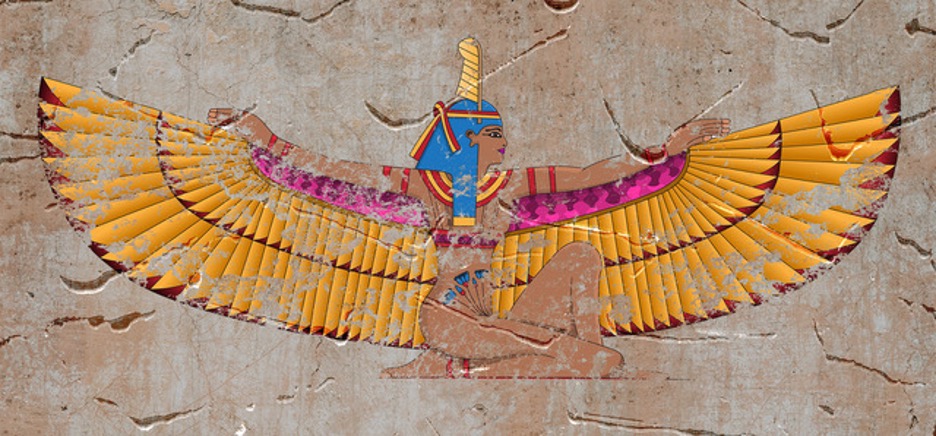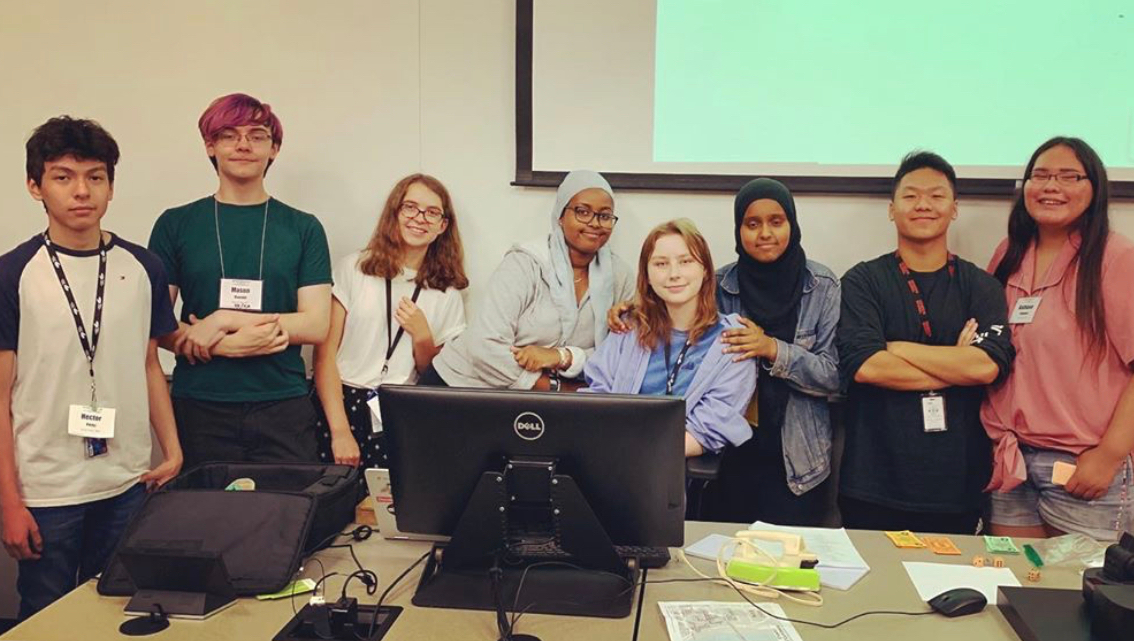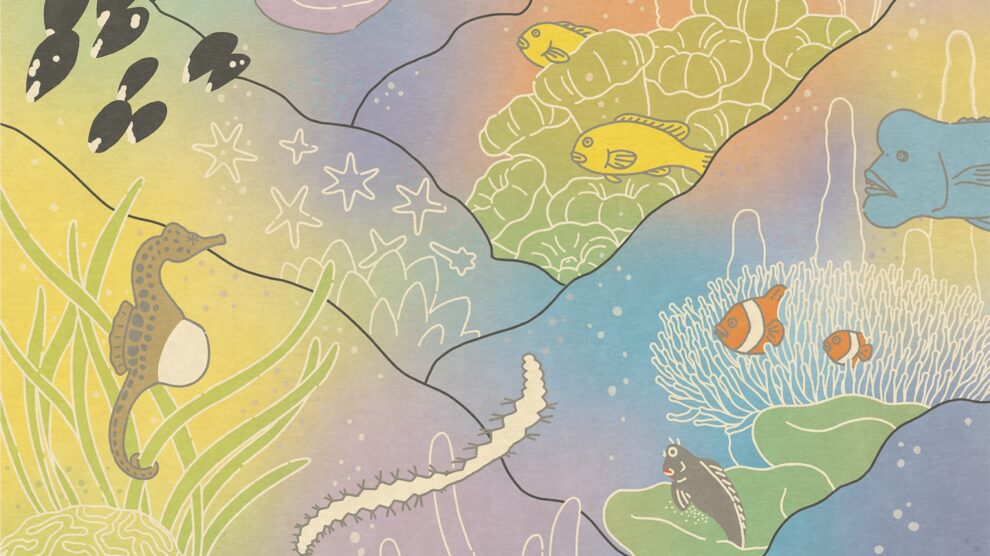Afrofuturism Unveiled
Illuminating the Path to Cultural Resurgence and STEM Excellence
By Devin White & Ebony O. McGee
Vol 26, no. 2, Ways of Knowing


Sankofa: Looking Back on Kemet to Find Afrofuturism
White supremacist practices of stealing labor, ideas, and credit from Black people have resulted in the erasure of innumerable contributions by Black people to science, technology, engineering, and mathematics (STEM) fields throughout history.
Historical erasure functions as structural and intellectual violence, and despite centuries of exploitation and subjugation under systems of white supremacy, Black people in STEM have been at the forefront of innovation and discovery in various fields, including mathematics, astronomy, physics, chemistry, engineering, and computer science. Their work has profoundly influenced our understanding of the world and led to the development of many of the technologies we rely on today.
Where would the US be today without the contributions of enslaved Black people and their descendants’ knowledge of STEM? Where would STEM be without racism?
Sankofa, a Twi word from the Akan tribe of Ghana, encourages Black folx to “go back and get it.” 1 The Adinkra symbols for Sankofa are represented by two symbols: (1) a mythical bird with its feet firmly planted forward and (2) an adorned heart. The bird represents the idea that the past serves as a guide for planning the future, represented by the egg on the bird’s back.2,3
We are Afrofuturists and we desire to reshape STEM using an Afrofuturist perspective. Afrofuturists use the lens of science fiction and fantasy to explore the Afrikan diaspora experience, both past and present, and to imagine new possibilities for the future. Afrofuturist works deeply explore interconnections between the past, present, and future. Moreover, a key characteristic of Afrofuturism is revisiting the past to theorize the future. They emphasize the role of spirituality in shaping the destiny of the Afrikan diaspora. Ytasha Womack, author of Afrofuturism: The World of Black Sci Fi and Fantasy Culture (2013), describes a “total reenvisioning of the past and speculation about the future rife with cultural critiques.”4 Afrofuturists often challenge traditional narratives of history and progress, and they envision futures that are more inclusive and equitable.
Afrofuturism has been around since the mid-20th century, but the term wasn’t formally articulated until Mark Dery’s 1993 essay, “Black to the Future: Interviews with Samuel R. Delany, Greg Tate, and Tricia Rose.” After engaging with the works of a variety of prominent Black science fiction writers and artists, Dery uses Afrofuturism to describe these works as “speculative fiction that treats African-American themes and addresses African-American concerns in the context of twentieth-century technoculture.”5 This is a helpful starting point, but it is important to note that Afrofuturism is a diverse and evolving movement. Today, Afrofuturists hail from all over the world, and they use a wide range of media and genres to express their visions for the future. The term emerged in response to science fiction of the time reinforcing colonial cultures of white supremacy and perpetuating Blackness as alien, while ignoring Black communities and ideas.
In the spirit of Sankofa, we look back to the ancient Afrofuturists of Kemet, Egypt’s original name. The term “Kemet” directly translates to “the Black land” or “the Black country.” This name was used by the people residing in the Nile Valley region from around 3100 BC, during the early Dynastic Period, up to the end of the Roman period, around 395 AD.6 The people who originally referred to the land as Kemet were indigenous African ancient Egyptians themselves. The term underscores the rich, fertile soil along the Nile River in contrast to “Deshret,” or “the Red Land,” which referred to the surrounding desert. The use of Kemet as a reference to ancient Egypt emphasizes the roots of this civilization, countering Eurocentric narratives that often downplayed or separated ancient Egypt’s Africanness from the rest of the continent.
Afrofuturism draws heavily upon Ma’at, a Kemetic philosophy, which promotes balance, harmony, and justice.7 Afrofuturist works envision a future where individuals of Afrikan descent are liberated from oppression and can coexist harmoniously with the universe. The convergence of Ma’at and Afrofuturism is predicated on the idea that in order to build a better future, the past must be challenged and ancestral stories should be explored to establish a common consciousness.

Herman Poole Blount, better known as Sun Ra, the name he chose as a rejection of his slave name, is an Afrofuturist musician from the 1950s who is often positioned as a founding figure of Afrofuturism.8 Sun Ra knew that Ra was the Kemet word for the sun and was considered the first cosmic entity.9 Kemet theorized the universe was at one time a condensed ball of matter that could not shed light and could not be pierced by light. When Ra made the universe, it was Ra who connected with and made everything. Ra was the condensed ball from which all things, animals, and elements were formed when the Big Bang occurred. Nothing exists outside of Ra and all things are connected through the unity of Ra.10
Sun Ra was inspired by science and astronomy, and he incorporated these themes into his music and performances. For example, his album, song, and film “Space Is the Place” explores many Afrofuturistic themes; the film depicts a journey to Saturn to escape racism and oppression on Earth.11,12 Sun Ra’s Afrofuturism was also connected to STEM fields through his interest in Afrikan cosmology. He believed that the ancient Egyptians had a deep understanding of the universe and that their knowledge could be used to create a better future for Black people. Sun Ra’s Afrofuturism can be seen as a way of reclaiming STEM for Black people and challenging the Eurocentric views of science and technology development.
The contributions of Kemetic philosophy to the world’s knowledge systems cannot be overstated. Kemet is credited with the establishment and operation of the first libraries and universities.13 The early philosophies of Kemet are viewed as one of the first accounts of the creation of the universe and explanations of existence and being itself. In an example of Black history being erased and appropriated, ancient Greek mathematicians, canonized by European mathematicians, falsely claimed Kemetic mathematics texts as their own.14
The Kemetic emphasis on imagination and creativity is essential for innovation in STEM fields. Scientists, engineers, and mathematicians need to be able to think creatively and come up with new ideas in order to solve problems and make progress. Imhotep (c. 2600-2500 BC) was an Egyptian architect, mathematician, and physician who was one of the first scientists and engineers in the world. He designed the Step Pyramid of Djoser, which is one of the oldest surviving monumental structures in the world. The philosophy of Kemet’s emphasis on imagination and creativity resonates with Afrofuturist art and literature, which frequently feature futuristic technology, alternate realities, and fantastical creatures. Kemet’s contributions to science, technology, and mathematics are a source of inspiration for Afrofuturists, who see Kemet as evidence that Black people have always been innovators and leaders in STEM fields.
Recovering Ancient Knowledge to Heal a Historical Wound
While ancient Kemet is in our distant past and the legacy still reverberates today, the transatlantic slave trade is in our recent past and its vestiges plague us today. The wound of slavery on the Black American psyche and self-knowledge clouds our future. The trauma of slavery thrust Afrikans into a world built and sustained by colonial use of technologies. Afrofuturism endeavors to recover the knowledge lost due to slavery while simultaneously critiquing contemporary manifestations of systemic racism. Afrofuturism reminds us to revisit the historical and the scientific context of slavery. The contributions to the industrialization of the United States came off the backs and were extracted from the minds of enslaved Black people. However, Black enslaved people were rarely positioned as the originators and producers of scientific knowledge and were often subject to the horrible and inhumane use of experimentation to advance scientific knowledge.
Revisiting the United States history of slavery necessitates that we wrestle with systemic racism and its role in creating the STEM-centric industrial revolution. The STEM-centric Industrial Revolution was a period of rapid technological and economic change that began in the late 18th century. This revolution was driven by the development of new technologies, such as the steam engine and the cotton gin. The Industrial Revolution led to an increase in the demand for slave labor. Enslavers used captives to work in factories and on plantations, and to build roads and railroads. The Industrial Revolution also led to an increase in racial segregation. White people and Black people were often separated in public places, such as schools and restaurants. Black people were also often denied access to jobs and housing. The trauma of slavery serves as a foil to any conception of a Black future, Afrofuturism is thus a countermovement to the afterlife of slavery.
Without the contributions of enslaved Black peoples’ knowledge in the field of STEM, the U.S. would be without several important advancements. Enslaved Black people contributed significantly to various fields, including agriculture, engineering, and medicine. For example, they brought invaluable knowledge of crop cultivation and land management techniques from Africa, which greatly influenced Southern agriculture.15 In spite of their enslavement, they also often served as skilled laborers, building infrastructure and contributing to early industrialization.
Without the influence of systemic racism, STEM could be a beacon of advancement and diversity. The suppression of Black contributors and hindrance to their educational and career opportunities have resulted in lost potential for countless innovations. Without racism, STEM could embody values of equity and be immensely enriched by diverse backgrounds, leading to more innovative and inclusive solutions to global challenges.
Afrofuturism is described as a response to a need for complex understandings of the violence of systemic racism and a foregrounding of how racist, neoliberal logic impedes the abolition of multiple forms of racism and a movement towards the creation of a collective imagining of the destruction of white supremacy.16 Afrofuturism rejects creative works that do not foreground racism as endemic in our current society as these works merely reproduce structural racism.17 Thus, even in the midst of a world rife with antiblackness (police killings, mass incarceration, and healthcare, housing, environmental racism, and employment discrimination), Afrofuturism provides an opportunity for Black speculation and freedom dreaming.
Afrofuturism rejects creative works that do not foreground racism as endemic in our current society as these works merely reproduce structural racism.
Afrofuturist scholars and artists have used STEM to explore the history and impact of racism on science and technology. Afrofuturist STEM can be used to dismantle white supremacy and other forms of oppression. Through Afrofuturism, STEM has the potential to create a more just and equitable future by centering Afrofuturistic principles and the lives of Black people.
For example: In 2002, Dr. Alondra Nelson, the Harold F. Linder Professor of Social Science at the Institute for Advanced Study, edited a special issue of Social Text, a leading academic journal in cultural theory, where she detailed how Afrofuturism served as the backdrop for building a community of Black STEM scholars.18
Since then, Nelson and colleagues like Ruha Benjamin have gone on to publish books and articles that challenge race neutrality in STEM fields such as Captivating Technology: Race, Carceral Technoscience, and Liberatory Imagination in Everyday Life (2019).19 Benjamin criticizes a concept called techno-utopianism, which refers to the belief that technology can lead humanity to a utopian future. While there is a risk that this belief could foster a naive optimism, in Afrofuturist theory, caution is exercised to critically examine the intersections of race, technology, and social change.
Afrofuturism emphasizes the potential of technology as a source of liberation while concurrently recognizing its potential for use as a tool for control and oppression if left in the wrong hands. Thus, Afrofuturism joins the critique of techno-utopianism by suggesting that technology alone is not a panacea for societal issues. Instead, it can be part of a multi-pronged approach to address systemic racism, provided it is developed and used responsibly, ethically, and inclusively.
STEAM: Science, Technology, Engineering, Afrofuturism, and Mathematics
Afrofuturism bridges the gaps between science, technology, engineering, art, and mathematics (STEAM), reflecting the diversity and richness of the Black aesthetic. While many researchers purport their own definitions of STEAM, most definitions posit STEAM as some integration between one or all the components of STEM and art for the purposes of inspiring more creativity and inclusivity.20
Researchers have noted that Black students experience STEAM education as fundamentally different from typical STEM education grounded in Eurocentric norms.21
Researchers investigated the experiences of two Black adolescent girls in a STEAM classroom, and found that when Black girls were allowed to use various forms of arts in their STEM learning experiences, it enhanced their STEM identities, confidence, and belongingness. A STEAM curriculum may deepen their connections between STEM and their lived intersectional experiences; build on their confidence for solving problems and learning STEM concepts; and develop skills for interrogating racism and sexism in STEM fields.22
Through interviews with 33 stakeholders from a Black STEAM (Science, Technology, Engineering, Arts, and Mathematics) Academy, researchers have demonstrated positive impacts of a STEAM curriculum on Black male high-schoolers. School administrators increased STEAM interest through engagement in research experiences with faculty and graduate students, internships and other work-based learning activities, and college tours to Historically Black College Universities (HBCUs) and elite Historically White Institutions (HWIs). School administrators found intentionally fostering a brotherhood through STEM related programs drove STEAM engagement.23
Afrofuturism provides a robust framework to foster creativity, innovation, and multidisciplinary thinking among Black students by integrating artistic elements and imaginative storytelling into STEM education.24 By imagining a future where Black people are thriving and successful in STEAM, Afrofuturism can help to challenge stereotypes about Black people and their contributions to STEAM fields. This has the potential to make STEM more welcoming for Black students, bolstering recruitment and retention.
The STEAM framework offers an interdisciplinary approach, by fostering a deeper understanding of cultural history, critical thinking, and problem-solving skills. This approach illuminates the interconnectedness of different disciplines, giving students an expanded perspective and a variety of ways to participate. At its core, Afrofuturism combines elements of Black history, culture, art, music, technology and futurism, encouraging Black cultural identity and the ability to envision a Black future. Its inclusion cultivates a creative and inclusive learning environment that encourages students to explore and integrate their cultural identity with their visions for the future. Afrofuturism connects students to the past, present, and future. It can inspire students to think about how they can use their skills to shape and influence the future, giving them a sense of purpose and motivation. Incorporating Afrofuturism into STEAM aims to increase diversity in STEM fields by creating an inviting educational environment for underrepresented groups. This approach brings cultural and historical perspectives that appeal to a broader range of students and encourages them to participate.
Afrofuturism is a diverse and inclusive movement, acknowledging the Latinofuturism and Indigenous futurism movements. Afrofuturism, Latinofuturism, and Indigenous futurism allow historically marginalized groups to share their unique perspectives with the world and to challenge the dominant narratives about the future, including their future.
Latinofuturism, also referred to as Latinx futurism and chicanafuturism, is a cultural movement that explores the intersection of Latinx identity and science fiction, fantasy, and speculative fiction. It is a way for Latinx people to imagine their own futures, free from the constraints of racism, colonialism, and other forms of oppression. Latinofuturism is inspired by a variety of sources, including Latinx mythology, history, and culture.25
Indigenous futurism, a term coined by Grace Dillon, is a way for Indigenous people to reclaim their own narratives and imagine a future that is free from colonialism and oppression.26 The key themes of Indigenous futurism are sovereignty and self-determination; land and environmental justice; culture and tradition; healing and resilience; and technology and spirituality.
All three movements strive towards transforming the world in ways that do not reproduce racism, sexism, capitalism, and colonialism. This framework can help STEM be more empathetic and understanding of minoritized people.27 Thus, in the interest of accelerating the diversification of STEM, both education and workforce, we propose that the A in STEAM stand for Afrofuturism along with Latinofuturism and Indigenous futurism, solidifying Black, Latinx, and Indigenous people’s knowledge-making in the canon of scientific inquiry and discovery.
Afrofuturism as our Past, Present, and Future
Afrofuturism draws upon profound sources of knowledge and wisdom, such as Kemet’s cultural and spiritual heritage and the guiding principles of Sankofa. This framework emphasizes the significance of learning from the past to inform future trajectories, and encourages Black scholars to embrace the knowledge and wisdom of their ancestors. Storytelling and myth-making become essential in preserving and transmitting knowledge across generations, ensuring the continuity of the Afrikan diaspora’s cultural heritage. Afrofuturism through STEAM empowers a new way to understand and create knowledge, expanding beyond the traditional boundaries of STEM towards knowledge production for the sake of Black liberation with implications for the heritage of Latinx, Indigenous, and other People of Color.28
Meet the contributors:
Devin T. White: Devin T. White is a doctoral candidate in the School of Education at Johns Hopkins where he researches STEM Education. Devin received his B.A. in English and Philosophy from Cornell University in 2014 and his M. Ed. In Higher Education Administration from Vanderbilt University’s Peabody College in 2016. His doctoral thesis is examining how Black Graduate Student Parents (BGSP) navigate STEM doctoral programs. Twitter: https://twitter.com/devintwhite / Site: https://www.teamedefi.org/
Ebony O. McGee (Ph.D): Dr. Ebony McGee of Johns Hopkins University is a Professor in the School of Education. Dr. McGee is an electrical engineer by training and is the leading expert on race and structural racism in STEM, with all its toxic consequences and the growing resistance to the traditional STEM ecosystem. She also investigates the limits of resiliency, wellness, and career embeddedness in the STEM ecosystem. She founded Racial Revolutionary and Inclusive Guidance for Health Throughout STEM (R-RIGHTS) and co-founded the Explorations in Diversifying Engineering Faculty Initiative (EDEFI), as well as the Institute in Critical Quantitative and Mixed Methodologies Training for Underrepresented Scholars (ICQCM), with support from the National Science Foundation, the Spencer Foundation, and the WT Grant Foundation. Twitter: @relationshipgap / Facebook: https://www.facebook.com/ebony.mcgee3
Notes
- Evelyn Kissi, “Sankofa: The critical Nkrumahist theory.” Journal of Pan African Studies 12, no. 7 (2018): 154-175.
- Christel Temple “The emergence of Sankofa practice in the United States: A modern history.” Journal of Black Studies 41, no. 1 (2010): 127-150.
- Philip Owusu, “Adinkra symbols as ‘multivocal’ pedagogical/socialization tool.” Contemporary Journal of African Studies 6, no. 1 (2019): 46-58.
- Ytasha L. Womack, Afrofuturism: The world of black sci-fi and fantasy culture (Chicago Review Press, 2013), 9-11..
- Mark Dery, “Black to the future: Interviews with Samuel R. Delany, Greg Tate, and Tricia Rose.” South Atlantic Quarterly 92, no. 4 (1993): 735-778.
- Zulu M. Itibari, “The ancient Kemetic roots of library and information science.” The Journal of Pan African Studies 5, no.1, e-Document, (2012).
- Kimani Nehusi, “Kemet and the philosophy of Afrofuturism.” The Black Scholar 53, no. 2 (2023): 4-16.
- J. Griffith Rollefson, “The ‘robot voodoo power’ thesis: Afrofuturism and anti-anti-essentialism from Sun Ra to Kool Keith.” Black Music Research Journal 28, no. 1 (2008): 83-109.
- Whit Frazier Peterson, “Knotting the note to the tone: The occult Afrofuturism of Jean Toomer and Sun Ra.” The Black Scholar 53, no. 2 (2023): 58-70.
- Fayza Haikal, “Ra, The Creator God of Ancient Egypt,” American Research Center in Egypt, accessed December 1, 2023, https://arce.org/resource/ra-creator-god-ancient-egypt/
- Dann Broyld, “The Underground Railroad As Afrofuturism.” Journal of Ethnic and Cultural Studies 6, no. 3 (2019): 170-184.
- Tobias Van Veen, “Destination Saturn: Sun Ra’s Afrofuturist Utopias in the Art of Stacey Robinson.” TOPIA: Canadian Journal of Cultural Studies (2018): 145-166.
- Zulu M. Itibari, “The ancient Kemetic roots of library and information studies.” The Journal of Pan African Studies 5, no.1 (March 2012): 246-266
- Samuel Burbanks IV et al., “The need for African centered education in STEM programs for Black youth.” Journal of African American Males in Education (JAAME) 11, no. 2 (2020): 12-24.
- Judith Carney, “From hands to tutors: African expertise in the South Carolina rice economy.” Agricultural History 67, no. 3 (1993): 1-30.
- Stephanie Toliver, “It will take nations of billions to obstruct our dreams: extending BlackCrit through Afrofuturism.” Journal for Multicultural Education (2023).
- Temidayo Eseonuand and Okoye Florence, “Making a case for Afrofuturism as a critical qualitative inquiry method for liberation.” Public Integrity (2023): 1-12.
- Alondra Nelson, “Introduction: future texts.” Social Text 20, no. 2 (2002): 1-15.
- Ruha Benjamin, ed., Captivating Technology: Race, Carceral Technoscience, and Liberatory Imagination in eEveryday Life. (Durham, NC: Duke University Press, 2019).
- David Aguilera and Jairo Ortiz-Revilla. “STEM vs. STEAM education and student creativity: A systematic literature review.” Education Sciences 11, no. 7 (2021): 331.
- Tisha Lewis Ellison and Tairan Qiu. “From Black girl exclusion to Black girl empowerment: Understanding one Black girl’s digital and STEAM literacy practices as empowering, liberatory, and agentic.” International Journal of Qualitative Studies in Education 36, no. 3 (2023): 465-486.
- Jennifer Turner and Autumn Griffin. “Dream a Little [STEAM] of Me: Exploring Black Adolescent Girls’ STEAM Career Futures Through Digital Multimodal Compositions.” In Genders, Cultures, and Literacies, pp. 49-61. Routledge, 2021.
- Edward Fletcher Jr and Erik Hines. “Culturally responsive strategies of a high school STEAM themed academy to engage African American males.” The High School Journal 105, no. 4 (2022): 273-293.
- Nathan Holbert, Michael Dando, and Isabel Correa. “Afrofuturism as critical constructionist design: Building futures from the past and present.” Learning, Media and Technology 45, no. 4 (2020): 328-344.
- Cathryn Merla-Watson, “Latinofuturism.” Oxford Research Encyclopedia of Literature. (April 2019) https://doi.org/10.1093/acrefore/9780190201098.013.648
- Grace Dillon, “Walking the Clouds: An Anthology of Indigenous Science Fiction.” Tucson: University of Arizona Press. (2012).
- Woodrow Winchester III, “Afrofuturism, inclusion, and the design imagination.” Interactions 25, no. 2 (2018): 41-45.
- Stephanie Jones and Nicol Howard. “Traversing the Gaps: An Afrofuturist Approach to Social Change Through Dreaming in Science Fiction and STEM/Computer Science Education.” Journal of Futures Studies 26, no. 3 (2022).




